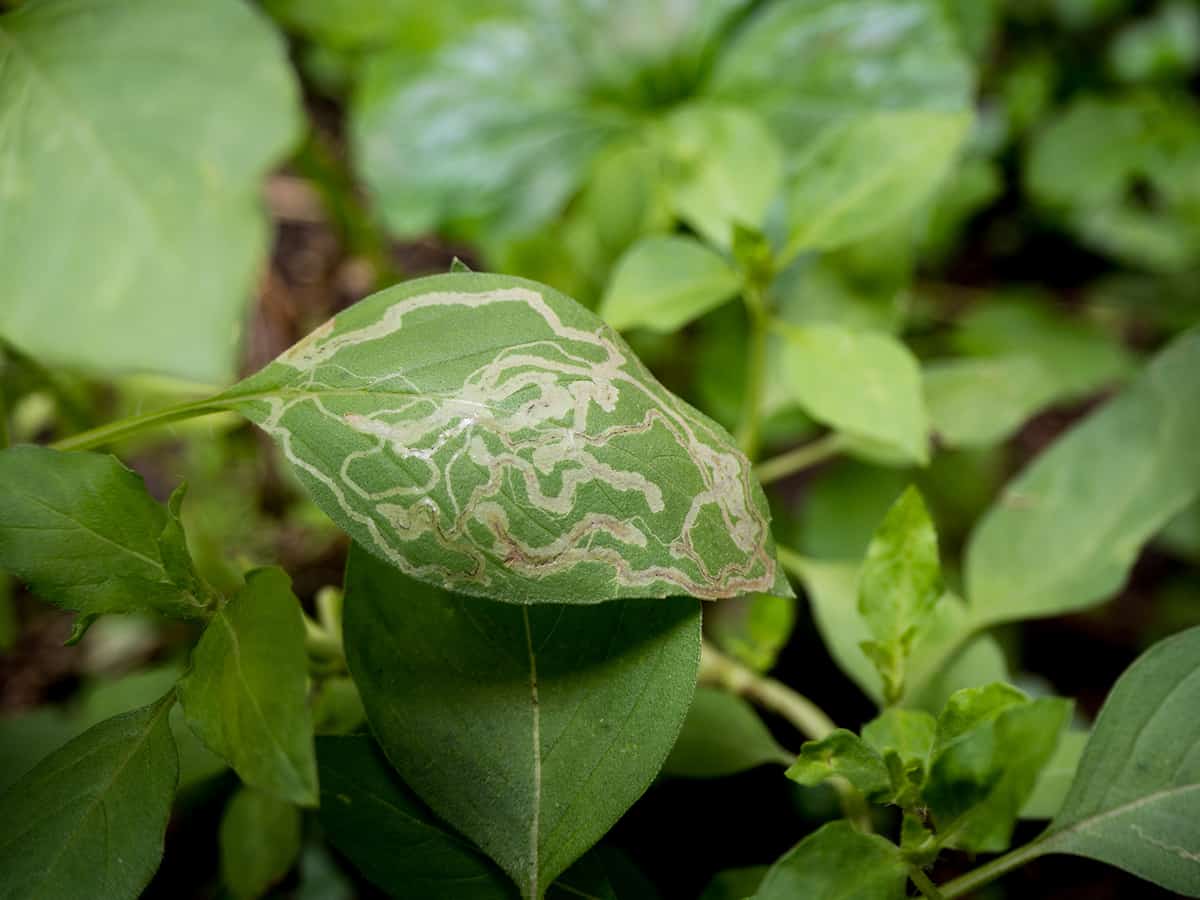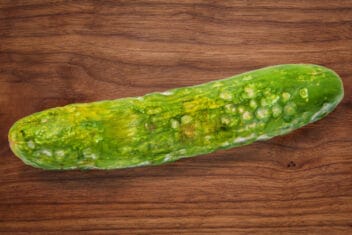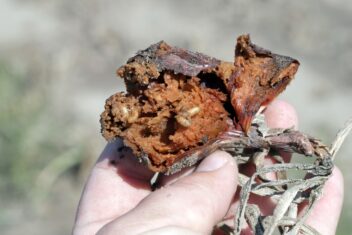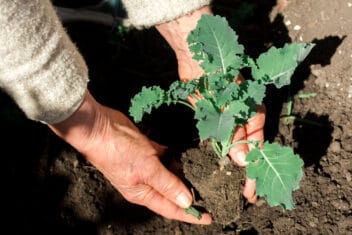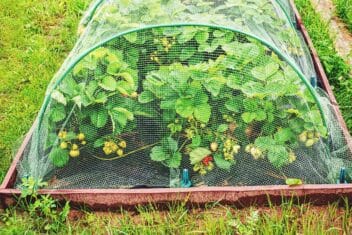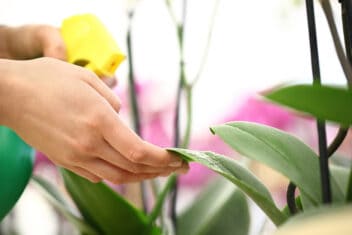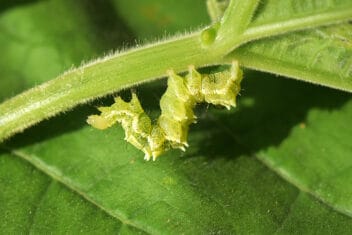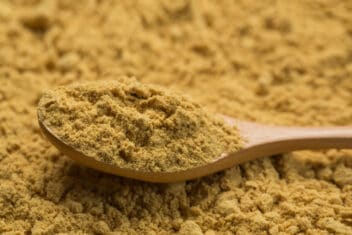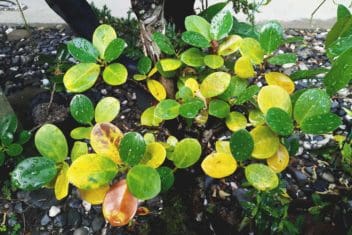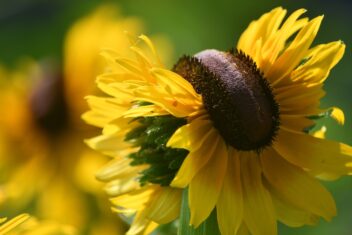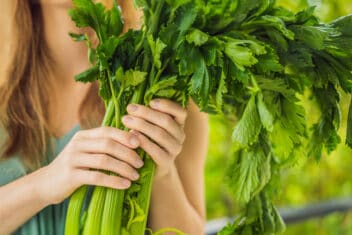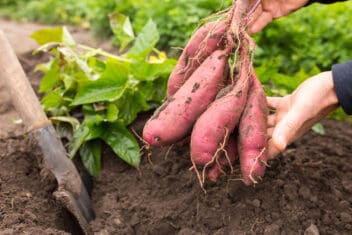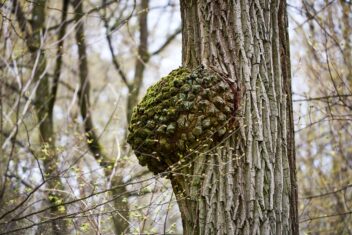Basil is one of the most popular culinary herbs to grow, thanks to its fragrance and delicious flavor. It’s also one of the easiest herbs to grow, so when your basil plants start to die, you wonder what’s happening. That’s when you need to look at the common basil pests and diseases.
All plants are vulnerable to a range of diseases and insects; basil is no exception.
We’ll guide you through the most common things to watch for and make sure you know all of the necessary preventative measures to keep them at bay.
8 Common Basil Pests
There are quite a few bugs who are eager to nibble on your herbs.
1. Aphids

One of the most common basil pests is aphids. These small, soft-bodied insects stick to the underside of the leaves and stems of the basil plant, sucking out the sap. They spread a sticky substance over the plant called honeydew that attracts sooty mold and ants that will cause further damage.
Small aphid infestations aren’t a big deal; spray the pests off your basil plants with strong jets of water. You also can spread reflective mulches to deter aphids from your plants. The only time you need to use insecticides is when you have serious infestations. Neem oil and insecticidal soaps also are effective methods of control for aphids.
Learn more about aphids in your garden.
2. Cutworms
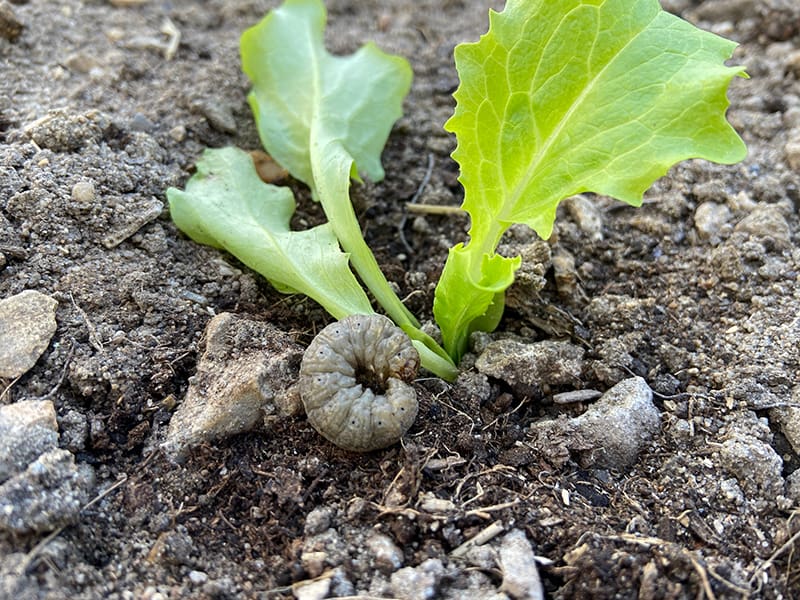
Cutworms are the larval stage of several different beetles. They live in the soil and are particularly dangerous for young seedlings and plants. At night, they chew through the stems rapidly, often severing plants at the soil line.
One thing you can do to stop them is to make a collar around the base of your basil plants with aluminum foil or cardboard to protect the stem from cutworms. Push the collar one inch into the soil and leave a minimum of three inches above the soil.
Here’s what you need to know about controlling cutworms in your garden beds.
3. Flea Beetles
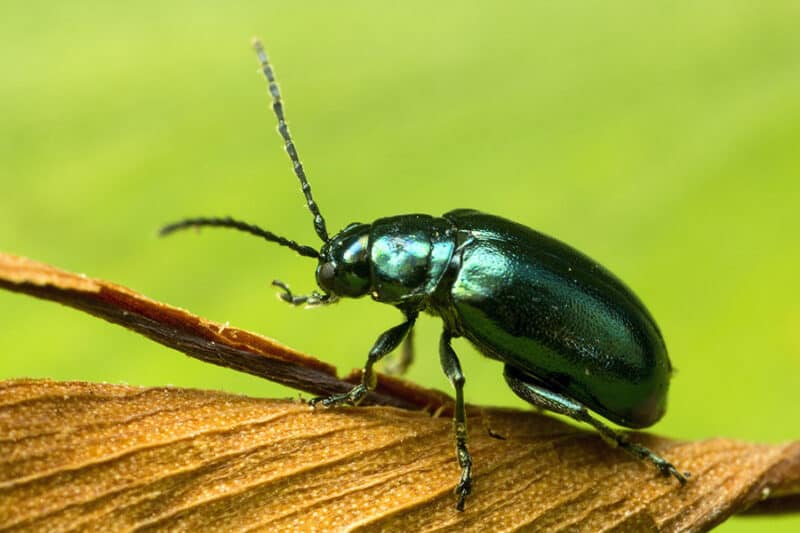
Flea beetles are one of the most frustrating basil pests because they target young plants and seedlings. An infestation causes reduced plant growth, and in severe situations, plants might die.
Flea beetles are tiny, jumping from plant to plant like fleas. Older plants tolerate infestations, but young plants won’t so cover your plants with floating row covers to block the beetles. Diatomaceous earth and neem oil are effective control methods, as well.
Learn more about treating flea beetles in your garden in our guide.
4. Grasshoppers
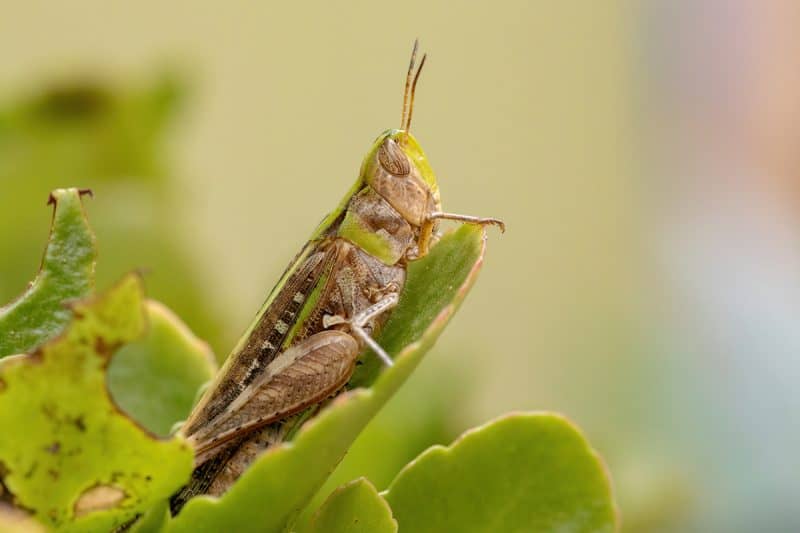
Most people don’t consider grasshoppers a garden pest, but they are. The adult and nymph stages feed on the foliage, buds, and stems basil. The nymphs feed on the leaves, causing holes everywhere. As the pests grow, they’ll destroy the foliage.
Inviting birds to your yard is one step to get rid of grasshoppers in the garden. If infestations are serious, spray insecticides to treat the problems. Our guide has more information.
5. Japanese Beetles
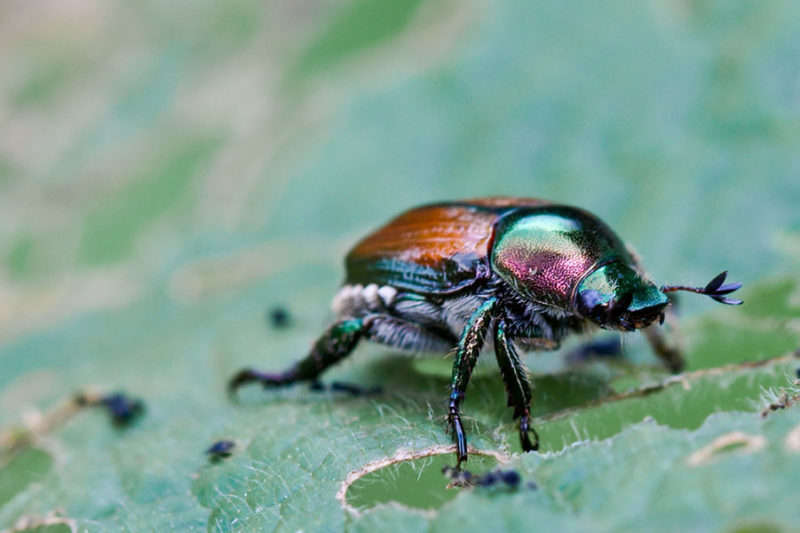
Japanese beetles are one of the easiest basil pests to identify in the adult form. They have a metallic green-bronze beetle that flies and jumps throughout your garden plants. These beetles skeletonize the leaves with the veins remaining, but they also damage the flowers and buds on the plants.
If you had Japanese beetles in previous years, make sure you use floating row covers in your garden to protect your basil. Always handpick the beetles that you see, dropping them in soapy water. Spray neem oil or insecticidal soaps to reduce Japanese beetle populations.
6. Leafminers
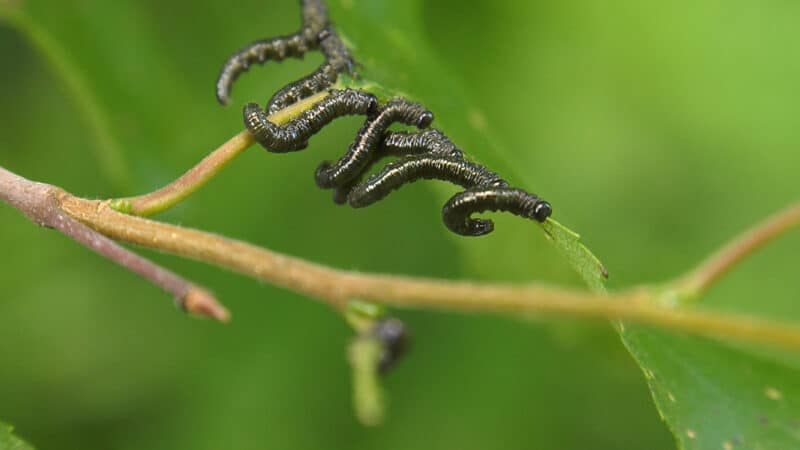
Leafminers cause trails on the leaves and serious infestations cause white blotches on the leaves of your plants. You might see leaves dropping from your plant, causing a decrease in yield from the plants.
The only time that you should use insecticides is when you are sure that you properly identified the pests. The sprays that treat leaf miners also decrease beneficial insects, so it should be a last resort. Some gardeners opt to remove plants instead of letting the infestation continue.
If you don’t mind a little work, it’s very satisfying to smoosh the bugs inside the leaves. It’s kind of like popping bubble wrap on a small scale.
7. Nematodes
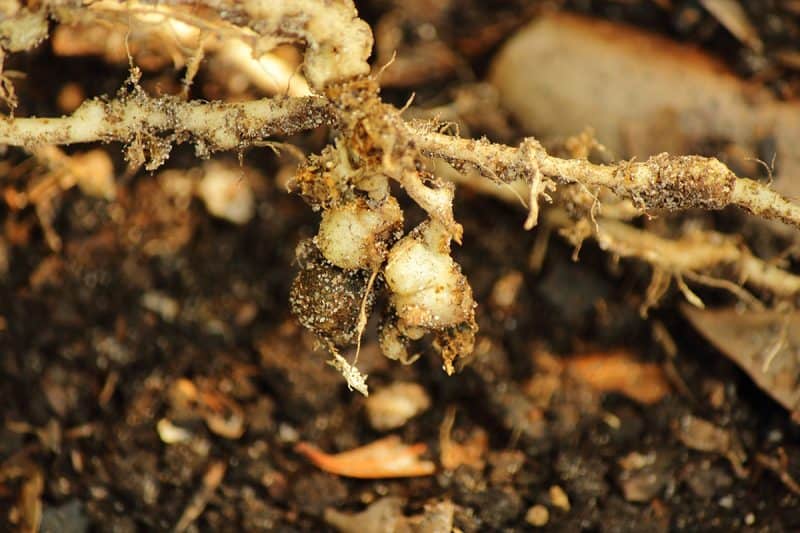
There are hundreds of nematode species, but the most dangerous is the root knot nematode. Root knot nematodes leave galls on the roots of the plant that prevent the plant from bringing nutrients up the stems. Infestations cause stunted growth and eventual death.
Treating a root knot nematode infestation is nearly impossible. You’ll need rip up your basil and solarize the soil afterwards to reduce the population if you want to plant there again.
Learn more about root knot nematodes in your garden.
8. Slugs & Snails
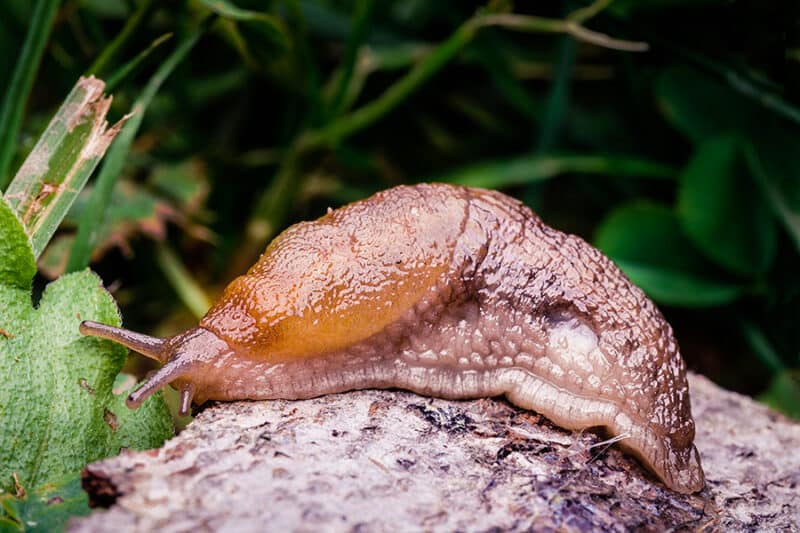
Slugs and snails are two of the most frustrating garden pests for gardeners. They chew through the leaves and stems of your basil plants, and if the infestation is severe, these pests skeletonize entire plants.
Prevention is easier than getting rid of slugs and snails; practice good garden sanitation by removing plant debris and promoting air circulation. You can try spreading wood ashes or eggshells around the base of your plants and putting out beer traps in your garden to attract and drown them.
Look at our guide on different ways to get rid of slugs in the garden. Most work for snails as well!
5 Common Basil Diseases
Dealing with basil diseases is frustrating; no one wants their basil plants to die. Knowing diseases infect basil plants help you stay vigilant and proactive. Watch for signs of a problem and remember to have proper air circulation around your basil plants.
1. Cercospora Leaf Spot
Cercospora leaf spot is a fungal disease that infects basil plants, along with other plants, that causes circular and irregular dark spots on the leaves with light centers. The spots gradually expand over time.
This fungus spreads by overhead irrigation and splashing the fungus on the plants that live in the soil. That’s why you need to water the plants at the soil level and spread mulch around the base of your plants to prevent splashing.
Removing symptomatic leaves is the first step. Then, find a fungicide that contains potassium bicarbonate and spread your basil plants weekly. Fungicides only work for minor infections; severe infections require the entire plant to be removed from the garden.
2. Downy Mildew
Another one of the most common basil diseases is downy mildew; it’s a fungal infection that causes yellowing leaves and discoloration that starts around the middle vein. The most common sign of downy mildew is a gray fuzzy or downy growth on the lower surface of the leaves. Severe infections cause brown or black necrotic patches on the plant.
Treating downy mildew is a bit tricky; preventative measures are the first line of defense. Start by reading our guide to downy mildew to learn about treating it in your garden.
3. Fusarium Wilt
One of the most deadly basil diseases is fusarium wilt because there is no treatment once your plant contracts this fungal disease. It presents itself with yellowing, wilting leaves, or the leaves might have brown streaks.
Over time, fusarium wilt worsens, stunting the growth of the plant and eventually killing the plant. Treating plants that already have fusarium wilt is impossible, so all you can do is remove infected plants. Learn more about fusarium wilt in your garden.
4. Gray Mold
No one wants to deal with mold in their garden, and this is particularly true when it comes to gray mold. This fungal disease causes brown to gray fussy growths to develop on the stems and leaves of the basil plant. Gray mold leads to the leaves falling off of the plant, and severe infections cause plant death.
Gray mold appears in conditions that have high humidity and poor air circulation. Treating this fungal disease is nearly impossible; no chemical treatments work. It’s recommended to remove infected plants.
5. Leaf Spot
One of the most common bacterial basil diseases is leaf spot. It causes angular or irregular brown water-soaked spots on the leaves, along with streaks on the stems.
Unfortunately, if your basil plants contract leaf spot, treatment isn’t an option. Gardeners have to focus on preventative measures, like planting disease-free seeds, promoting air circulation, and removing diseased plants and soil immediately.
